A mechanic for simple yet realistic markets to track in-game resource demand.
One of the best ways to drive player interaction is by giving (or even forcing) players to trade resources with each other. Often times, the value of a given resource is not published, making it up to each player in the transaction to determine his or her own personal valuation of that resource. That uncertainty can be a great thing to introduce in a game, but it can also lead to frustration when absolutely nobody will trade you a wheat or when inexperienced players sell their ore for a song.
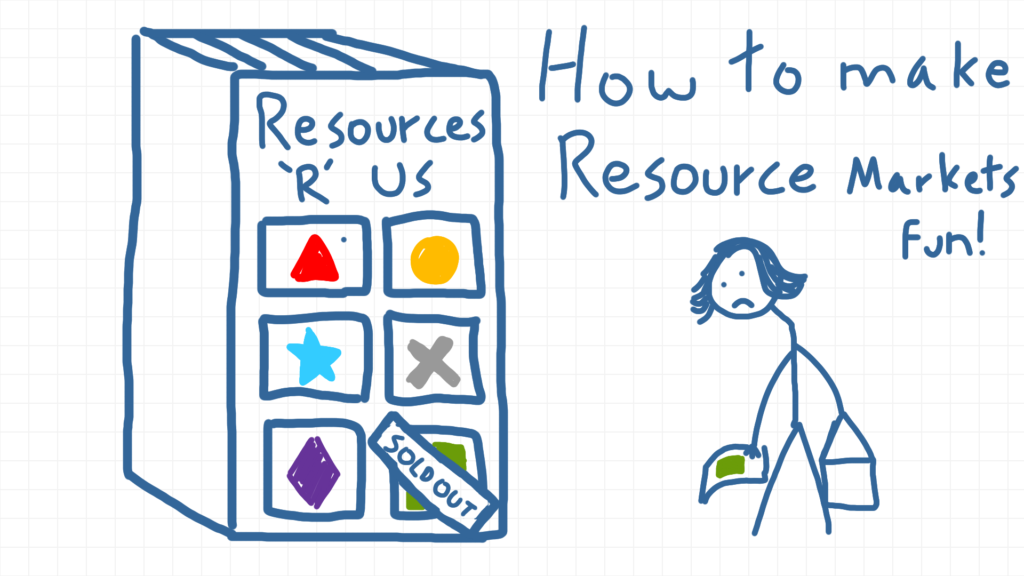
Instead of leaving the values of different resources undefined, why not have your resources have a known value? This gives players a sense of confidence about their future turns, since they will have a good idea what they could trade their current resources for. But let’s not settle for fixed values – instead, we can have these values fluctuate with changing demand. If people have been buy a lot of wheat on the market, the value of wheat goes up relative to the other resources. Similarly, when someone dumps a bunch of ore, it gradually becomes worth less and less.
The Resource Market
The core of this idea is a table with 1 row for each resource available for trade. Each resource has 5 columns, labeled 1 through 5. Each resource row has a cube to track the current value of that resource. As the cube moves left or right, the resource’s scarcity changes, making its value go up or down. The current value of the resource, as dictated by the column its cube is in, is how many units of that resource are taken from the “bank” when making a trade. Conversely, a resource’s value also determines how many units of that resource must be turned in to make a trade. In summary, the resource’s value is the exact number of units that must taken out or turned in when making a trade.
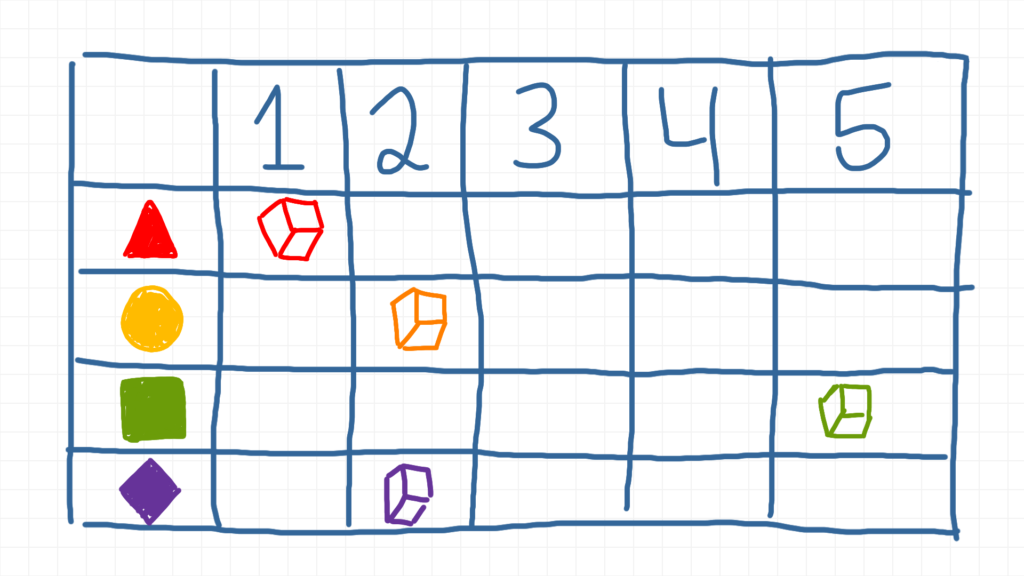
Take the above example. A player desires some Red resource in order to advance his strategy. He looks at the table and sees that Red is pretty valuable – its value is 1. The player has some Yellow resource and a whole bunch of Green. Yellow is of moderately high value at 2, while the market for Green is flooded and it has value 5. The player could trade in 2 Yellow to receive 1 Red. The player could also turn in 5 Green to receive that same 1 Red.
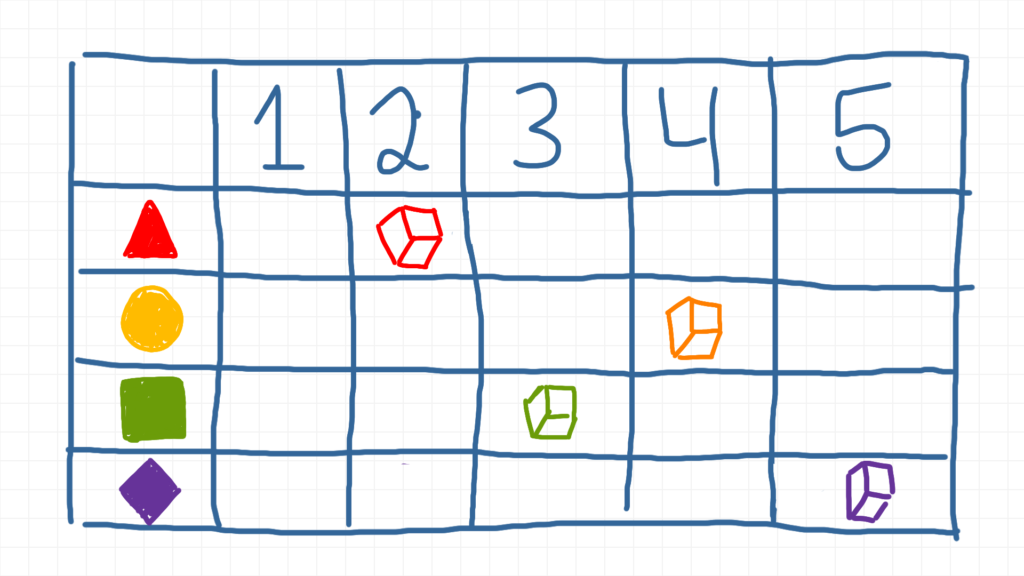
Above is another example. Now the player wants lots of Yellow resources. Yellow is valued at 4 – it must be bought or sold in increments of 4. The player can turn in 2 Red in order to receive 4 Yellow. Alternatively, the player could also turn in 5 Purple to also receive 4 Yellow.
Resources are fun, not fungible
To make this idea really great, don’t have a cash resource in your game. That is, don’t let players simply sell their resources for cash and then buy other resources later on in time with that cash. By doing this, you depower the whole idea of using different resources in the first place, and should probably consider just using the single cash resource to in lieu of various other resources.
By simply converting resources to cash through this market, you give up some possible design space. For example, you could have some resources subject to different penalties that may shape player strategy. Thematically, maybe Yellow is a food resource, and storing more than 6 is penalized due to the additional refrigeration required. Maybe Purple is some kind of bizarre technological commodity subject to randomly disappearing from a player’s hand (via a dice roll), thereby penalizing a player for hoarding too much of it.
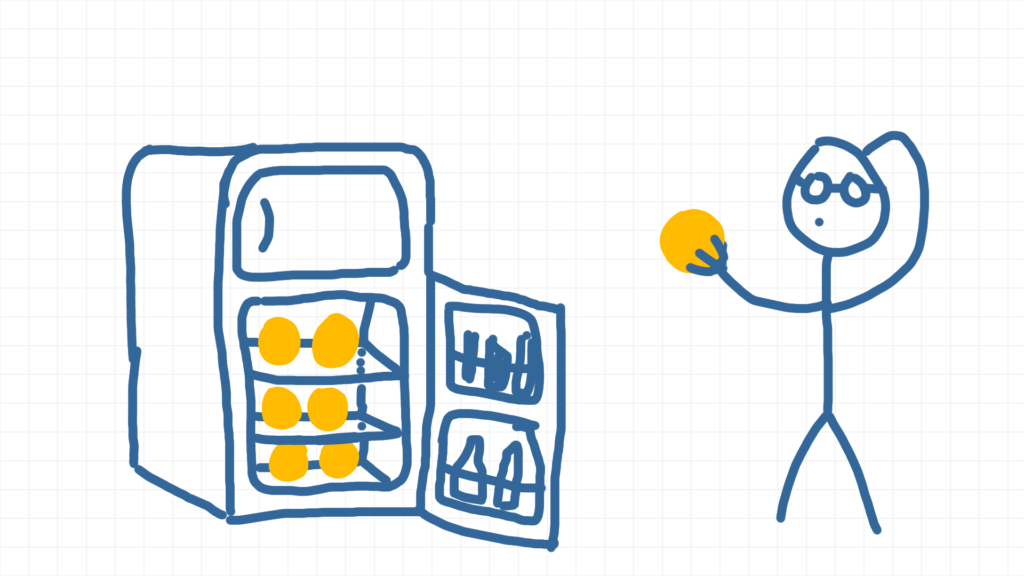
Alternatively, maybe your game simulates large distances, and has multiple markets at different places around the map. In this case, a player would have to be very cautious when opening a forge in Pittsburgh with the goal of trading steel for computer chips in Silicon Valley because of the high transportation costs of the heavy steel. With multiple markets, players with a good transportation network could profit from different valuations for the same resource in other markets. (See “arbitrage” at Wikipedia).
The Dynamic Market
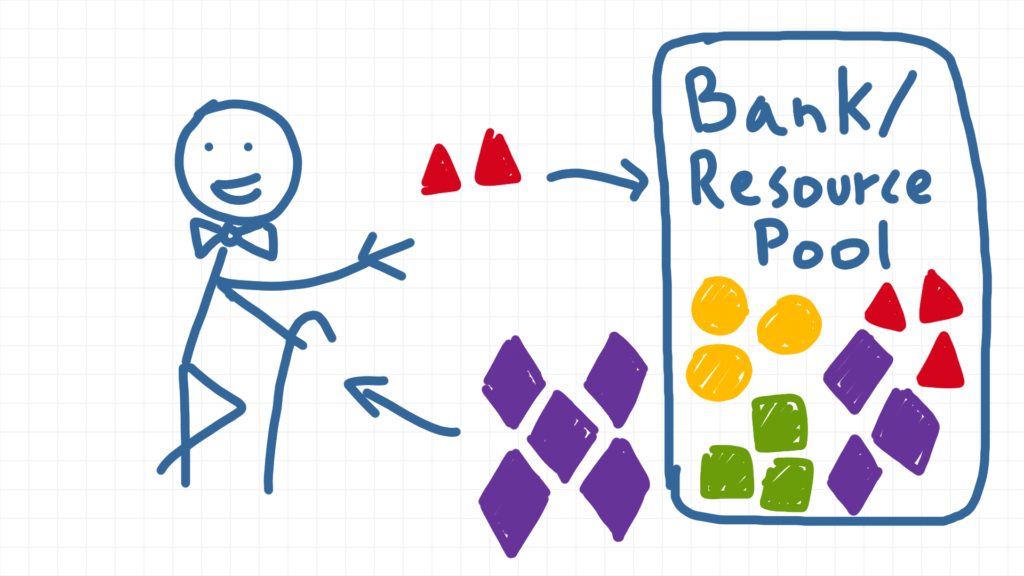
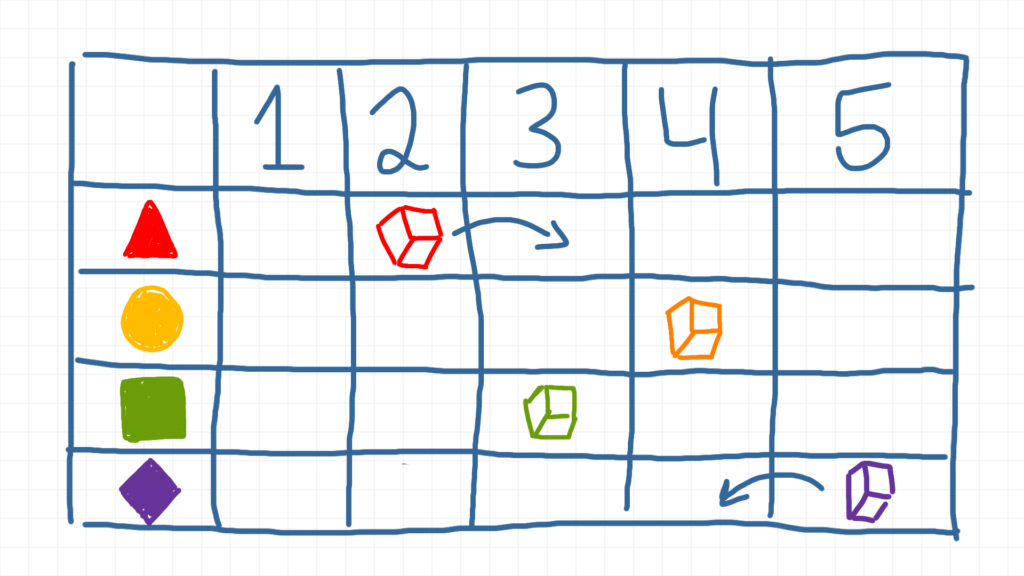
To make this a truly realistic market, we need to make it dynamic. This part is great. The market moves anytime a player makes a trade with it, in response to what the trade was. When a resource is purchased, its cubes moves to a lower number. When it is traded in, its cube moves to a higher number. In the above example, when Red gets traded in and becomes less scarce, its cube moves right. Conversely, when Purple gets bought, it becomes more scarce, and its cube moves to left.
This injects more player interaction because players can sway the market by their actions over time. This can directly impact the value of the resources in other players’ hands. It can really add a sense of corporate warfare as players seek to flood the market of the resource another player was assuming would be rare and valuable. You could also add some randomness by using a custom die to slightly shift the values of different resources each turn. Also, you could give players the power to directly move a cube via a powerful special ability (thematically, product advertising or innovation, perhaps).
“I can produce either Blue or Yellow resources. Yellow resources are very rare and would let me gain a lot of other resources when trading. However, I could flood the market with Blue, diminishing the value of my opponents massive supply of Blue.”